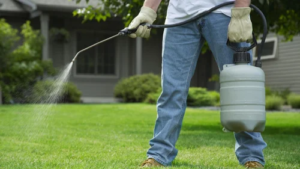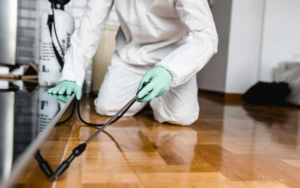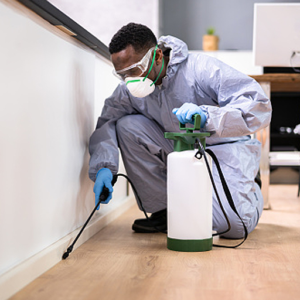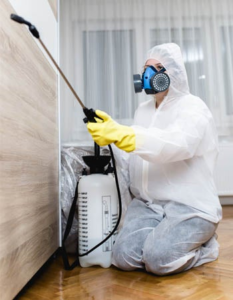Pest Control Prosper TX is the management of unwanted organisms that harm plants or animals. It can be accomplished through exclusion, repulsion, physical removal or chemical treatment.
Preventative measures include removing food and water sources, reducing clutter, sealing cracks, and regularly cleaning dark, damp areas. Biological methods use living organisms such as predators, parasitoids, or pathogens to suppress pest populations.
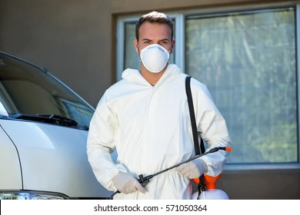
Insects play many important roles in nature, including fertilizing plants and pollinating them. Some insects eat other insects, which helps reduce pest populations. They can also carry diseases that threaten crops and people. Moreover, their mouthparts can insert bacteria and viruses into plants. For example, thrips moving between impatiens and other plants could transmit mycoplasma-like organisms that cause Peach X disease or aster yellows. In addition, they can introduce plant pathogens that could threaten greenhouse-grown plants like gypsy moths and canker worms.
In general, insect populations fluctuate widely over time, influenced by weather and food supply. Thus, it is often difficult to predict how an infestation will develop. Insecticides can control these populations, but only when they are applied before damage occurs.
The use of insecticides must be balanced with the benefits that many insects provide to our environment. In fact, some insects are necessary for the reproduction of flowering plants. For this reason, many gardeners and farmers are reluctant to apply insecticides that might harm these beneficial species.
Insecticides should only be used according to the directions on their labels, and a great deal of care must be exercised when applying them around plants. All insecticides — even those labeled as “safe” for home use — can have negative impacts if used incorrectly. Legislation requires that labels give full directions for use, including proper safety precautions.
Because of the wide variations in cognitive abilities among insect species, any potential role for learning by parasitoids or predators should be examined on a case-by-case basis within a pest management strategy. Some hymenopterans, such as parasitoids of gypsy moths and cankerworms, have demonstrated the ability to learn by association between odor blends and host-plant species (Tully et al. 1994, Meller and Davis 1996).
In addition, a variety of physical barriers can be implemented to restrict the movement of unwanted insects. These include greenhouses, tunnels, and pesticide-treated barrier nets. A final note: the use of pheromone lures can help attract and control certain types of insects without exposing them to chemical agents that might disrupt their natural behavior.
Rodents
Rodents (including mice, rats, squirrels and hamsters) are a common pest problem. They can cause a wide range of damage, primarily by chewing. Their front teeth never stop growing, so they must chew on things to keep them trimmed, including wood framing and structural beams. This can weaken the structure of a building, leading to costly repairs and potential hazards for people living in the home.
They also contaminate food with their droppings, urine and saliva. They also gnaw on electrical wiring, which can lead to short circuits and fires. Thousands of people are bitten by rodents each year, and many of them become sensitized to rodent dander, which can trigger asthma.
Because rodents are so abundant, they can easily repopulate an area with their young, making control more difficult. A professional should always be involved in the process of rodent management, and a plan should include sanitation, exclusion and lethal controls.
Identifying an infestation early is key to avoiding significant property damage and other problems. Inspect your home and commercial buildings on a regular basis for signs of rodent activity. Look for droppings, rub marks, urine (using a black light) and nesting materials. Listen for scratching and other noises, and be sure to check out hard-to-reach places like behind stove walls and under sinks.
Preventing rodents requires removing their food sources and shelter. Store foods in rodent-proof containers, and remove piles of debris, stacks of lumber, trash and animal carcasses from the surrounding area. Trim trees and shrubs that overhang or touch buildings, and rake up leaves and debris that can provide shelter.
There are a number of rodenticide products available, including solid bait blocks, grain and pellet baits, and liquid baits. Solid baits should be housed in tamper-resistant bait stations, while liquid baits can be placed in areas inaccessible to children and pets. In addition, traps can be “pre-baited” without setting them to get rodents used to their presence and increase the chances of routine feeding and triggering the traps when they are set. These methods should be combined with ongoing sanitation efforts to achieve effective and long-lasting results.
Bed Bugs
The dreaded bed bug is perhaps the most challenging of all pests to control. These small, reddish-brown blood-sucking insects hide during the day in crevices and cracks of beds, furniture, wall moldings, and baseboards and come out at night to feed on people who sleep in infested rooms. Although they don’t spread disease, they can irritate people who are allergic to them. High standards of hygiene and housekeeping may help prevent or control infestations, but they cannot eliminate them completely.
The most effective method of eradicating bed bugs is to use heat treatment, which kills all stages of the pests, including their eggs. However, this treatment can take a full workday or overnight and requires the entire home to be evacuated. For this reason, it’s important to choose a professional exterminator who specializes in bed bug control and has experience with this problem.
A less-invasive alternative is to spray common hiding spots with surface pesticides that are labeled for bed bug control. This should include all furniture, draperies, carpets, mattresses, and box springs. Alternatively, a mattress encasement can be used to block the insects’ access to oxygen and food and suffocate them. These encasements, which are typically plastic and zippered, can be purchased online or from many pest control companies.
Another option is to place pitfall traps around a room’s furniture and beds, which intercept the pests as they leave or try to enter these resting places. Several studies have found that these traps are more effective than visual inspection at detecting low-level infestations, but they can’t replace a thorough inspection of the entire area.
Other options for managing a bed bug problem include washing sheets, pillowcases, blankets, and clothes in hot water and drying them on the highest dryer setting. Clothes that can’t be washed or dried should be sealed in plastic bags and placed outside for a few days in the sun. Bed bug swatters and insecticidal dusts can also be used in recessed screw holes, behind headboards, on furniture seams, under picture frames and clocks, and other hard-to-reach areas.
Weeds
Weeds cost farmers more than any other pest category, and many organic growers view them as their biggest barrier to successful organic vegetable production. However, while due vigilance to keep them from restricting crop growth is essential, a war mentality toward weeds can be counterproductive. Instead, organic weed control is best approached as a dance with nature to fulfill their natural ecological roles in the farm or garden ecosystem.
Weedy species such as lambsquarters (Quercus sativa) and wild carrot (Daucus carota) provide food for birds and mammals that prey on vegetable crop pests. Their flowers also supply nectar and pollen to the adult phases of beneficial insects and nematodes that assist with vegetable crop health. In addition, the stolons of perennial species like Phragmites (Phragmites australis) spread by seed and can help to stabilize soil erosion.
In contrast, annual weed species such as pigweeds and common ragwort (Rumex obtusifolius) are highly competitive in vegetable fields and require frequent disturbance to thrive. Because of their accelerated growth and prolific seed set, they are well adapted to cropping systems that frequently till or otherwise disturb the soil. This rapid growth, together with their high response to soluble nutrients and aboveground canopies that compete with crop plants for sunlight, enables them to rapidly establish in the disturbed soil.
The weedy characteristics that make them effective competitors in vegetable crops can also make them difficult to kill with herbicides. In fact, the long-term use of most herbicides has elicited an evolutionary adaptation from many annual weedy species, namely herbicide resistance.
As a result, many of the strategies used to control weeds in non-organic farming systems, including cultivation, mechanical and physical disturbances, and chemical spraying, have limited effectiveness against resistant weeds. Nontoxic methods of weed control, such as targeted application of classical biological control agents (herbivorous insects and microbial pathogens imported from the weed’s place of origin) and grazing by goats and sheep that devour invasive exotic weed species and their rhizomes, can be more effective in achieving a balanced, healthy weed flora in an organic production system.
